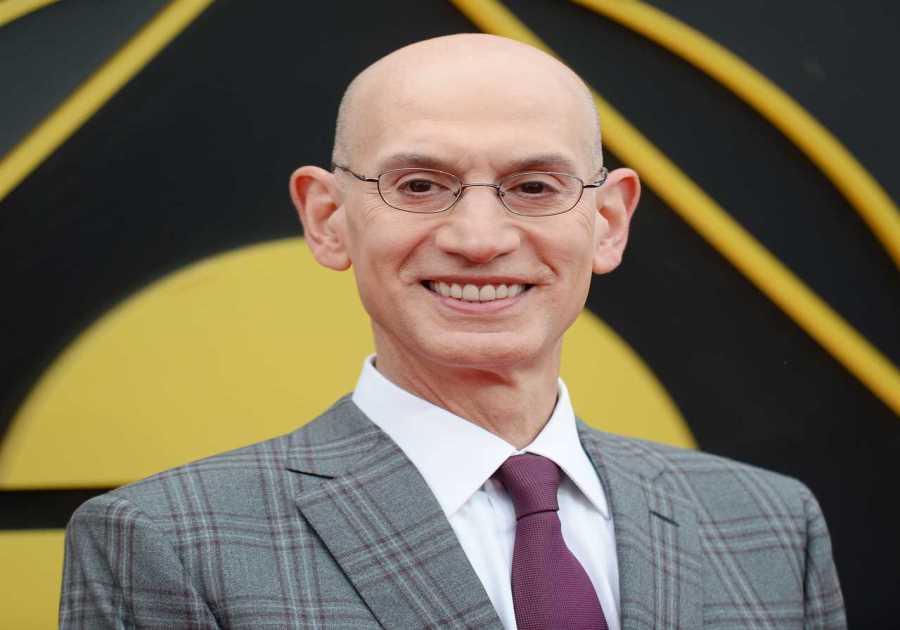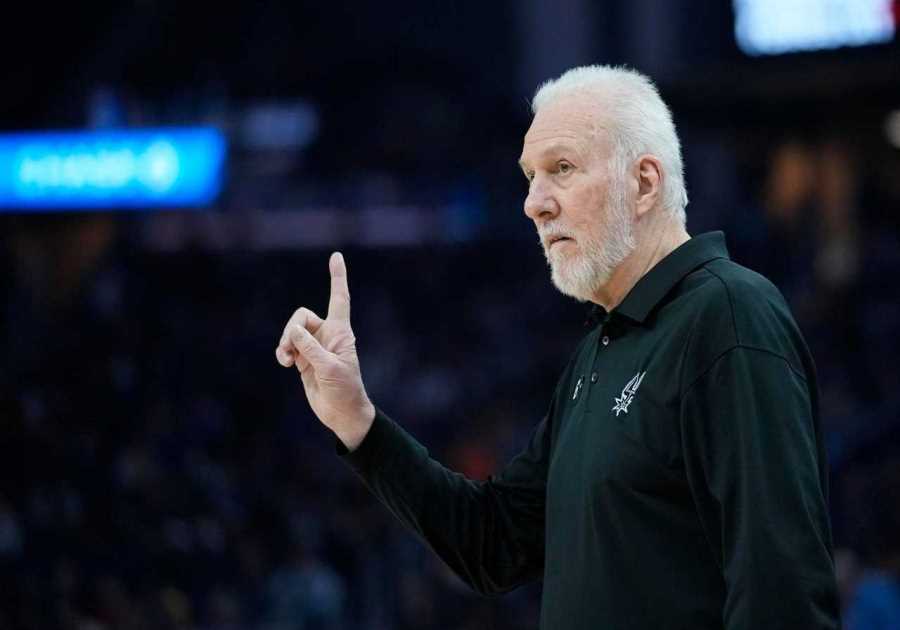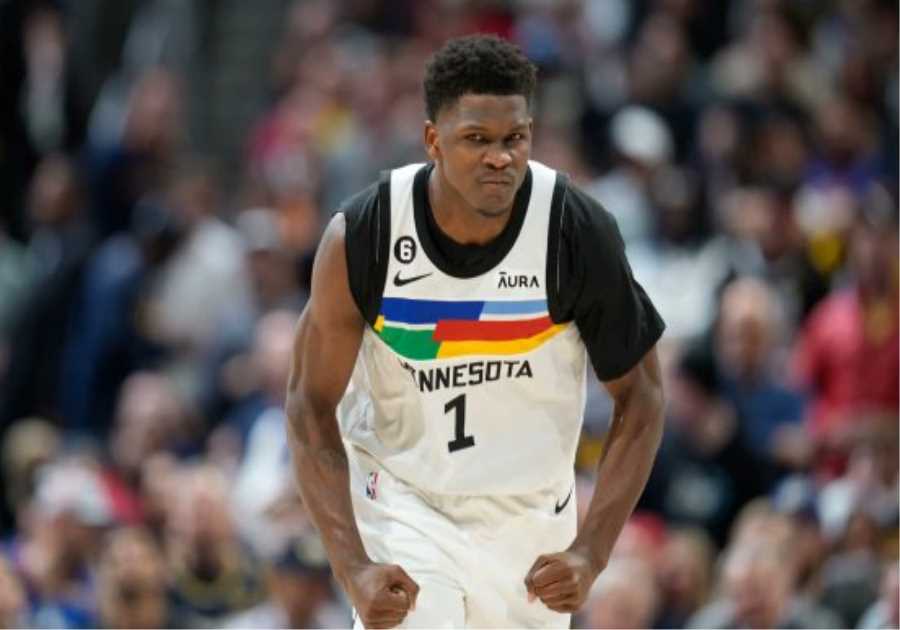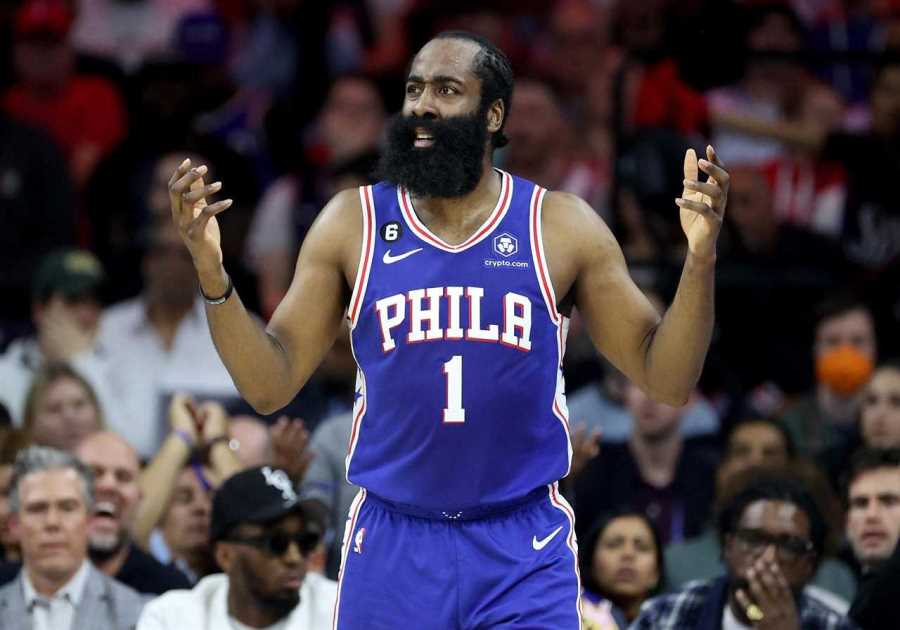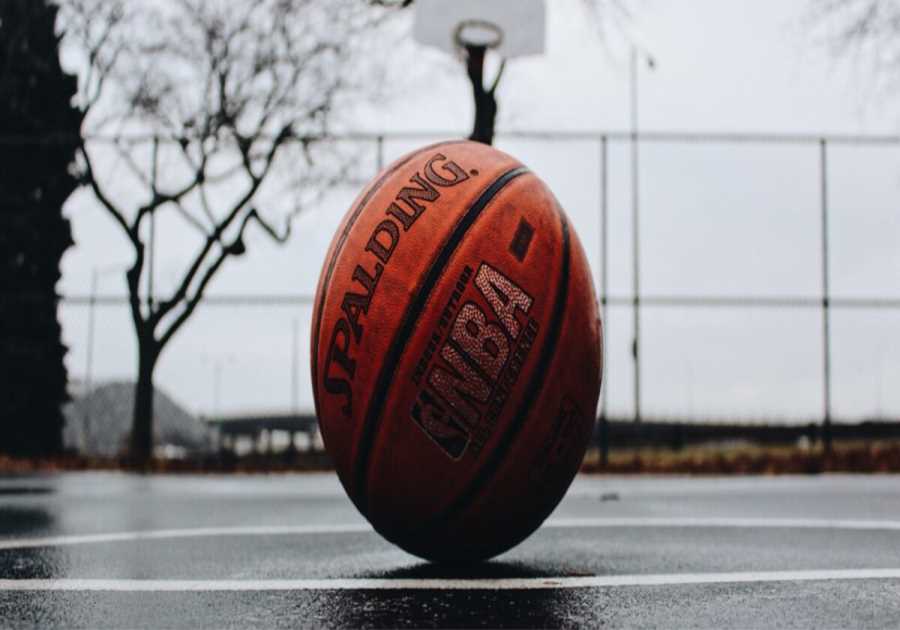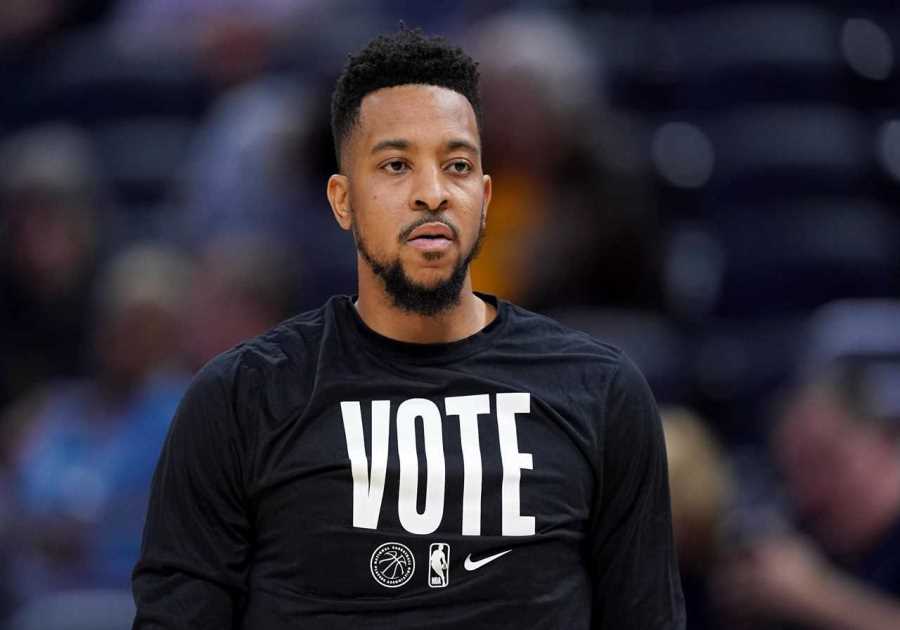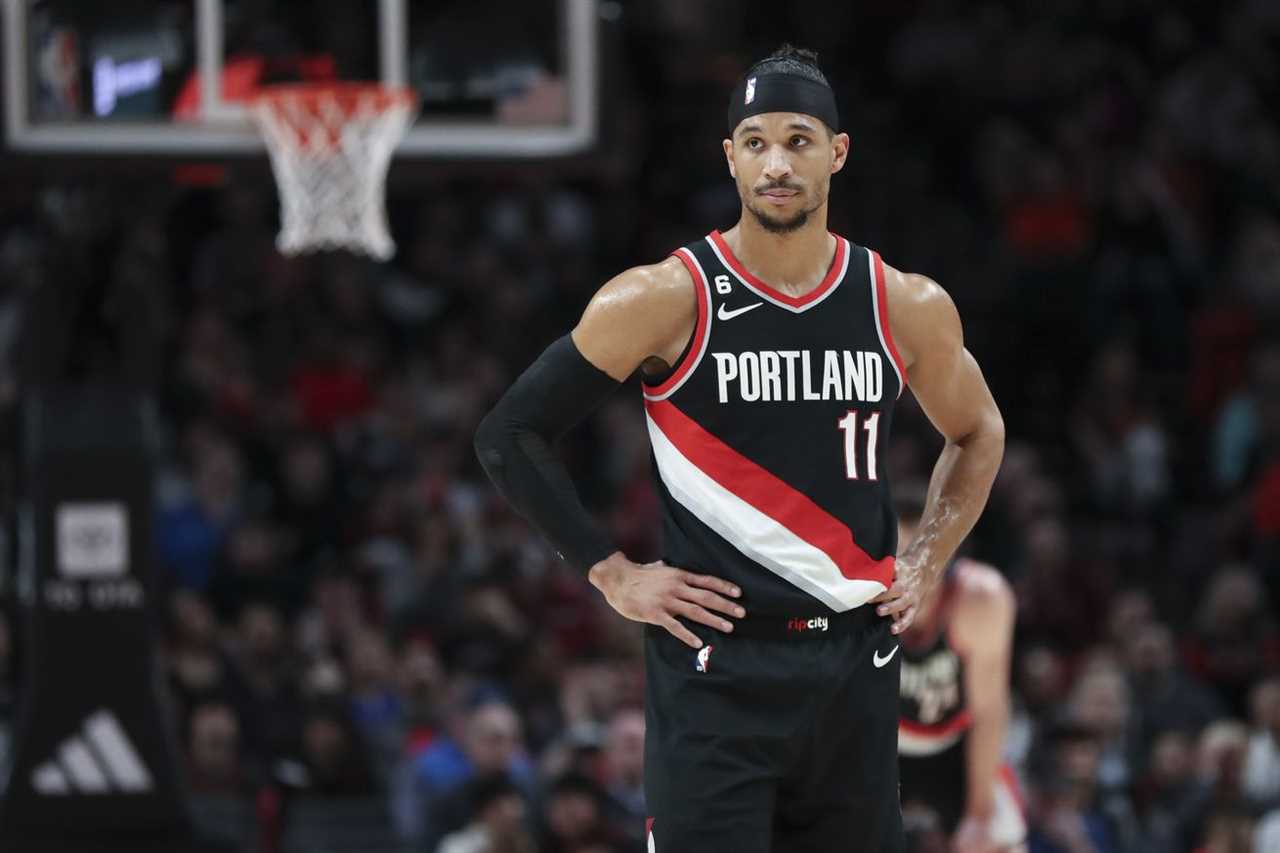
Photo by Amanda Loman/Getty Images
The multi-talented wing seems allergic to the three-point line.
The Portland Trail Blazers are stuck in a victory valley after descending their last real peak two months ago. If and when they trudge back up the hill and start winning again is a mystery but, first, they need to sort out some of their issues. “Cough cough” turnovers “cough cough”.
A multitude of factors have prompted the slide from the top of the Western Conference to below the 2023 NBA Play-In picture. While today’s topic isn’t at the top of the list of issues, it’s become pretty noticeable, at least for me.
Starting small forward Josh Hart provides a whole host of services on a basketball court. He defends, hustles, dribbles and passes, all skills executed with an above-average basketball IQ. These traits are adaptable and valuable to all 30 NBA franchises — which may lead Hart to play out the rest of the season in a different jersey, given his 2023-24 player option. We’ve already discussed that ad nauseam.
One thing Hart isn’t doing particularly well is getting the ball in the hoop from behind the arc. His 2022-23 numbers are down, both in attempts and makes.
Attempts is what brings us here today. Hart is taking a career low 2.0 threes a game and is making a career low 32.6 percent of them. It’s noticeable when compared to his two and a half seasons with the New Orleans Pelicans, where he took 4.4 threes per contest and still managed to hit 33.4 percent of them. He also put up 3.6 threes a game in the two years he spent with the Los Angeles Lakers, making 36.1 percent of them.
Unlike previous seasons, all 29 threes Hart has made over the past three months have been assisted, predominantly catch and shoot (1.8 of his 2.0 three shot attempts a game). This suggests he’s less likely to have a defender in his face at the time of the catch, as we discuss further down.
But while he’s only taking 2.0 threes a game, he’s getting a heck of lot more open looks from long range. He’s just not shooting them. This trend has led to one of the more noticeable of the multiple Portland miscues we’ve seen this season — the “Josh Hart passes up an open three, dribbles into the paint with either a shot dropping or the ball going to the other team” turnover.
It started as cringe-worthy but now elicits genuine ire, especially when we’re talking about a player of his stature, someone we know can do what needs to be done from long range.
Where’s Hart taking his shots?
For the purposes of today’s piece we’re going to compare the 47 games he played with the 2020-21 New Orleans Pelicans (his last full season with that franchise) and the 43 he’s played with this season’s Blazers. Yes, Hart was predominantly playing off the bench in 2020-21, but he was getting starter-level minutes and a diet of shots that shouldn’t be too dissimilar to what is currently expected of him.
For a large part of that 2020-21 season, Hart shot 52 percent of his shots (not including heaves) from behind the arc, good enough for the 58th percentile for all wings. A total of 3.8 of his 4.1 attempts were catch and shoot. Defenders got within two and four feet on only 0.3 of those 4.1 attempts.
During that year, Hart took 12 percent of his shots from the midrange, hitting 46 percent of them — good enough for the 86th percentile at his position.
The remainder (36 percent) were taken at the rim, with 63 percent passing through the net - an average 55 percentile for wings.
See Hart’s shot chart below, darker orange areas depict more shots.
Fast forward to the present day. So far this season, 26 percent of Hart’s shots (not including heaves) have been taken from three, the 7th percentile among wings. He’s halved the number of shots taken from three over the past two years. To provide some perspective, through the more than four years he’s spent in the league before arriving in Portland, Hart has rarely shot below 40 percent of his shots from that range.
Yes, the Pelicans, and the Lakers before that, ran different offensive schemes, but for someone previously comfortable behind the arc, like Hart was, it’s been nothing short of bemusing to watch this season.
Importantly, not one three-point shot he’s actually attempted this season has seen a defender guard him within two feet. The closest they’ve come is between two and four feet away and that has only been on 0.1 of his 2.0 attempts per game. And while this obviously doesn’t reflect the numerous passed up threes, I think it’s safe to say, opponents aren’t giving Hart the same defensive treatment as teammates Damian Lillard and Anfernee Simons.
The natural response to this would be, “OK, threes aren’t great, but surely he’s doing well in the midrange?”. Sorry, but no. This season, Hart has been shooting 26 percent of his shots (up from 2020-21) from the midrange, but only hitting 33 percent of them, putting him in a dismal 18th percentile in makes for players at his position.
Conversely, his shots at the rim have benefited. He’s taking 52 percent of his shots at the basket (98th percentile at his position) and making 68 percent of them, (78th percentile for his position) which is fine.
As for the eye test, even the most casual basketball watcher will notice the 6’5 vet’s current penchant for catching the ball behind the arc, pump faking or side stepping, and then bolting into the paint. From here he either shoots in the midrange, or kicks out to a teammate, which typically leads to a rushed shot or a turnover.
Don’t get me wrong, some of those passed-up-threes-turn midrange jumpers can be effective, but it’s not the best way to support this offense, which is currently already over-endowed with turnovers.
Turnovers
And this is the rub. The 27-year-old is recording a career high in turnovers in relation to his usage. He’s giving the ball back to the opponent 15.7 percent of the time, currently in the 6th percentile for protecting the ball at the wing position, with only Deni Avdija, Marjon Beauchamp, Dyson Daniels, Frank Ntilikina and Davon Reed behind him.
I’m not suggesting all his turnovers occur on the catch and shoot. Hart also plays a facilitating role, bringing the ball up the floor and initiating the offense at times, but his usage this season is on par with the rest of his career - around the 13 percent mark.
For some more perspective, let’s go back to the 2020-21 season, where Hart carried a 13.5 percent usage rate and was only turning the ball over 11.4 percent of the time.
In 43 games this season, Hart has already collected 72 turnovers, compared to the 49 he recorded in the 47 games through 2020-21. That’s an extra 23 turnovers in four fewer games.
Why is this happening?
I don't know.
For anyone watching the Blazers’ losses to the Denver Nuggets on Tuesday and the Philadelphia 76ers on Thursday, opposing defenses have cottoned on to Hart’s allergy to long-range shots. They’ve been sagging off him, impacting spacing for Damian Lillard and Anfernee Simons trying to get to the rim.
We know Hart can shoot. Let’s not forget his game-winning buzzer beater against the Miami Heat in Florida in November.
Let’s also remember that in the 13 games played with the Blazers after February’s trade last season, Hart was knocking down 2.4 of his 6.4 three point attempts, good enough for a fairly-impressive 37 percent. This included his 44-point performance against his hometown Washington Wizards on March 12, when he drilled 6 of 9 from long range on what became a pretty impressive win for the "trying-to-tank" Blazers.
At least according to Head Coach Chauncey Billups, Hart’s reluctance to shoot deep not a team directive. Earlier this month, the coach chimed in on Hart’s penchant for passing up threes.
Chauncey Billups, asked if Josh Hart has been too reluctant to shoot: “Yeah.”
— Sean Highkin (@highkin) January 15, 2023
“Yeah we’ve talked about it…he passes them up trying to be too unselfish but hopefully he’ll start shooting it more.” -Billups on Josh Hart passing up open shots
— Danny Marang (@DannyMarang) January 15, 2023
Unselfish is fine, but when you’re typically a decent long-range shooter, passing up wide open shots, it helps no one, particularly the currently struggling Blazers.
Conclusion
I appreciate Josh Hart. I enjoy his knack for rebounds, his ability to get to the rim and his dogged effort on defense and loose balls. But I also want him hitting threes. This team needs him hitting threes, not only to put points on the board, but to also lure opposing defenses out of the paint.
Whether it’s a lack of confidence, unselfishness, or a combination of both, it's not great. But I’ve also got no doubt that Hart eventually rediscovers his love for the long-range shot. Unfortunately with the trade deadline two and a half weeks away, there’s a chance he doesn’t find it again while wearing Portland’s jersey.
Adrian Bernecich
https://www.blazersedge.com/2023/1/21/23545958/josh-hart-portland-trail-blazers-three-pointers-damian-lillard-anfernee-simons-jerami-grant-turnover
By: Adrian Bernecich
Title: Josh Hart Needs to Shoot Open Threes
Sourced From: www.blazersedge.com/2023/1/21/23545958/josh-hart-portland-trail-blazers-three-pointers-damian-lillard-anfernee-simons-jerami-grant-turnover
Published Date: 01-22-2023
Frequently Asked Questions
Who holds record for most NBA career playoff wins?
LeBron has led the charge with an impressive 174 wins over NBA Playoffs history. He also played in 266 games. It's easy to see why he is one the most sought-after players in basketball today.
How long can a waiver-bound player remain?
A waiver is a condition in which a NBA player is released by their team at any time during the season. Waived players may be claimed by another side within 48 hours. If the player is claimed by more than one team, priority will be given to the team with a poor record.
How much does the NBA pay a ref?
Referees working in the National Basketball Association are paid competitive salaries for their officiating roles. The average NBA referee is paid between $150,000-550,000 per year. This pay scale can depend on experience, with more experienced referees earning higher salaries. Referees in the playoffs and Finals receive higher salaries than referees with additional roles such training new refs or working within the video review department. Some NBA referees receive royalties or endorsements from media outlets and television broadcasts. All in all, being an NBA referee is a lucrative job that can provide a stable source of income if one is willing to put in the necessary work and dedication.
Referees of the NBA receive a salary and also have access to health insurance, retirement plans, as well as other benefits. This helps referees sustain a healthy lifestyle as they officiate games and make important calls that can impact a game's outcome. Referees are often eligible for subsidized lodging, meals, and travel to away matches. This can provide additional peace of mind as referees work in pursuit of perfection on the court.
Referees in the NBA make a good living for their dedication and hard work, especially since they enforce rules during one of most popular sports in the world. While it can be exhausting, the job offers referees a rewarding opportunity to make an impact on basketball.
What is the most accomplished NBA team of all time?
This question will be debated for many years by fans. The Los Angeles Lakers and Boston Celtics have the most NBA championships, with 17 titles. The Chicago Bulls had their heyday in the 1990s when they won six titles under Hall of Fame coach Phil Jackson. The San Antonio Spurs have won five titles since 1999. In the same decade, the Golden State Warriors has won four. Other notable NBA teams include: the Philadelphia 76ers in 1980, the Kobe Shaq Lakers from 2000s, LeBron James's Miami Heat squad that won back–to-back championships (2012) and 2013.
Which NBA player has blocked the most shots in a single season?
Mark Eaton, in 1984-85, set all-time records at blocks (456) and blocks per minute (5.56), respectively. Eaton's all-time total that year was the greatest single-season number in NBA history.
Hakeem Olajuwon holds the NBA's record for most career blocks at 3,830. Olajuwon played 1,238 games over his 18-year tenure and averaged 21.8 point, 11.1 rebounds and 2.5 assists per game.
Statistics
- The 2013–14 season opened with 92 international players on the opening night rosters, representing 39 countries and over 20 percent of the league. (en.wikipedia.org)
- Meanwhile, the opening night rosters include a record-setting 234 players with some G League experience, according to the NBA ( Twitter link ). (hoopsrumors.com)
- Williams would 'likely' accept a deal worth $14-15M/year; Celtics are 'unlikely' to offer such a deal (HoopsHype) (bleacherreport.com)
- As of 2014, 45 percent of its viewers were black, while 40 percent were white, making it the only top North American sport that does not have a white majority audience.[102]As of 2017Democrats than Republicans.[103]Outside (en.wikipedia.org)
- Between 2012 and 2019, the league lost 40 to 45 percent of its viewership. (en.wikipedia.org)
External Links
nba.com
sports.yahoo.com
- Yahoo Mail, Weather, Search & Videos
- Game 1 of NBA Finals sees lowest viewership in recorded ratings history
twitter.com
- Tweet / Twitter
- Sam Amico on Twitter: "Timberwolves Waive PJ Dozier, CJ Elleby and AJ Lawson - Hoops Wire https://t.co/xKu1ZTuQZN" / Twitter
bleacherreport.com
- Which NBA Team Will Participate In the Victor Wembanyama Tathon?
- Latest NBA Intel - Sources Expect Zach LaVine Re-Sign with Chicago Bulls
How To
How a photographer at NBA Getty Images captures The Perfect Shot
This article shows how an NBA Getty Images professional can capture the perfect shot. The first step is selecting the right location. Next, choose the best angle to take your photo. Finally, you need to be able to predict what might happen next.
- Step 1 - Selecting the Right Place
To get the most out of any photograph, select the right place and time to take the picture. If there is too much activity around you, you risk losing the moment if something happens during the exposure. It is important to not have people blocking your view. Try to find a spot in which they will not be able see you taking photographs.
Start snapping as soon you find the perfect spot. It's always easier and more convenient to move closer to what is happening than farther back.
- Step2: Choose the Best Angle
After you have chosen the location, make sure to think about your camera angle. This is the most important aspect of capturing a great photo.
Choose a position that will allow you to have a clear view of the topic without getting in your way. If you are trying to catch a player playing basketball, then look at him through the basket. That'll give you a nice, tight frame without obstructions.
Next, look for interesting angles. The angle should show something special about the individual. While a low angle will show his height, a high angle will showcase his athleticism.
Consider framing. Framing is how things are placed within a frame. Remember to balance the background and the foreground when choosing the composition.
- Step3: Anticipating Next What
Finally, think ahead. It is important to think ahead if you spot something unusual, like someone jumping into the lane and a ball rolling toward you rim. Do not hesitate to shout "action" and "cut".
Once you have heard those words, stop the action. Then, wait for the action to resume before moving forward again. If you freeze the scene, it will ensure that the shutter button is pressed with sharp focus.
Follow these steps to ensure you get the perfect shot everytime. With patience and practice you will master your skills as a NBA Getty Images Photographer and create stunning photos that will last for a lifetime.

